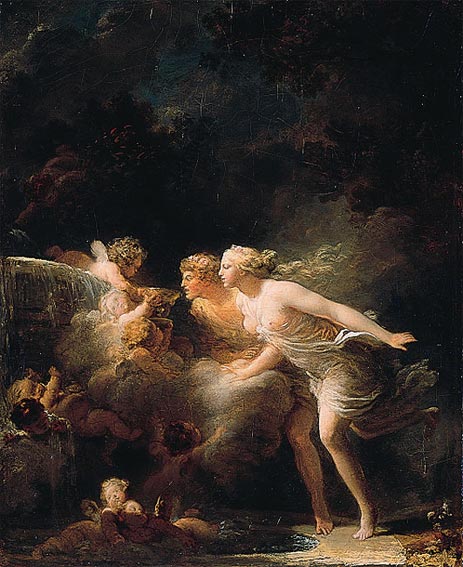On the Sunday before Valentine’s Day, this week’s appropriately amorous picture is The Fountain of Love by the French painter Jean-Antoine Fragonard. Created in 1784 for one of the artist’s aristocratic Parisian patrons, it was among his most celebrated paintings and was frequently reproduced in the form of engravings during the 1780s. But having become emblems of his genius and virtuosity, such allegories of passionate love fell from grace abruptly at the end of the same decade, following the French Revolution. Fragonard’s “excessive”, “licentious” pictures (such adjectives became inevitable adjuncts to descriptions of his art) were said to epitomise the decadence and corruption of the ancien regime. As his patrons were led one by one to the guillotine, his works were consigned to cellars and storerooms and his reputation went into near-total eclipse. When he died in obscurity in 1806, the principal French art newspaper of the time, the Nouvelles des Arts, ran an obituary of insulting brevity: “Fragonard senior died on August 22 after quite a short illness. He was seventy-four and a half years old and was extremely fat.”
It would be another fifty years before Fragonard came back into fashion and won new admirers, prominent among them the Fourth Marquess of Hertford, who purchased The Fountain of Love in 1871 (the picture can still be seen at his former home, now the Wallace Collection in London). One of the principal landmarks in the nineteenth-century revival of interest in pre-Revolutionary French art was Eduard and Jules de Goncourts’ L’Art du XVIIIe Siecle, published in 12 parts between 1859 and 1875. The Goncourts devoted one of their most fluid, erotically excited passages of prose to the painting shown here:
“It is still night, a night of stormy mystery weighing heavily upon the dark trees and richly...


